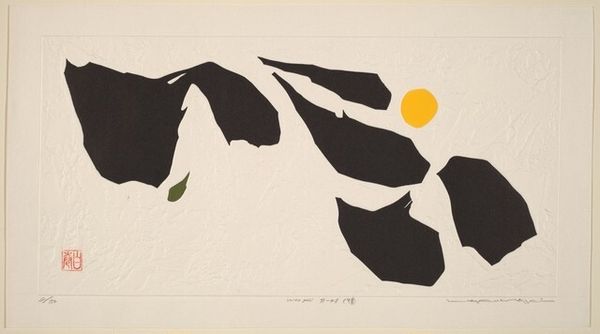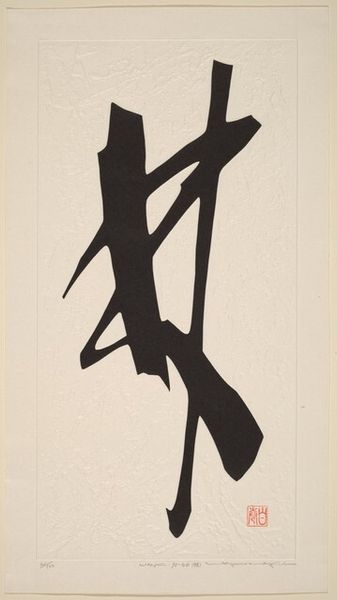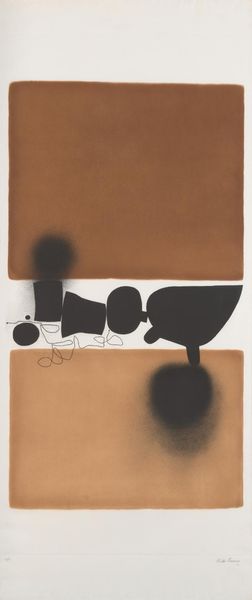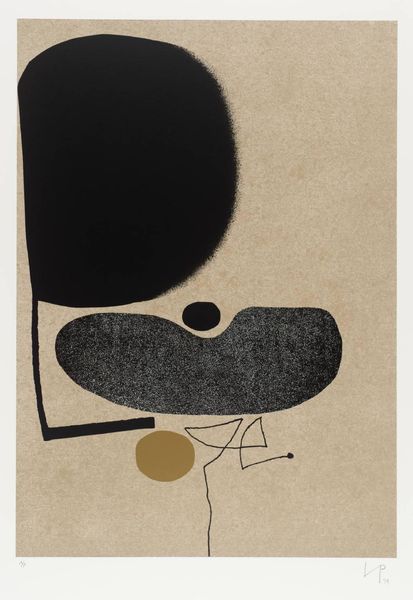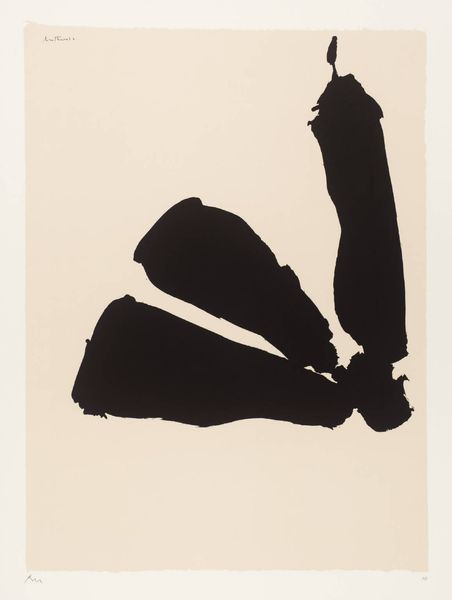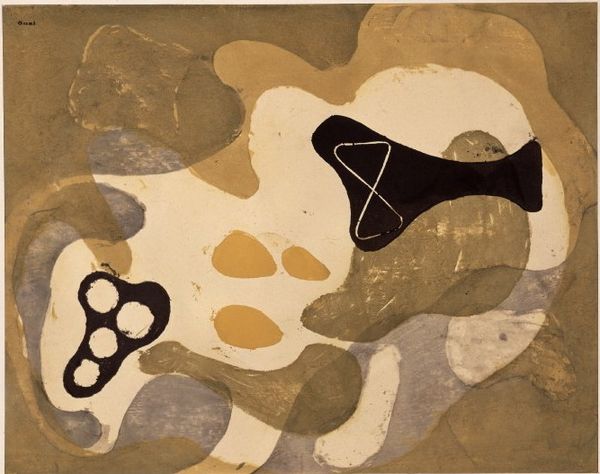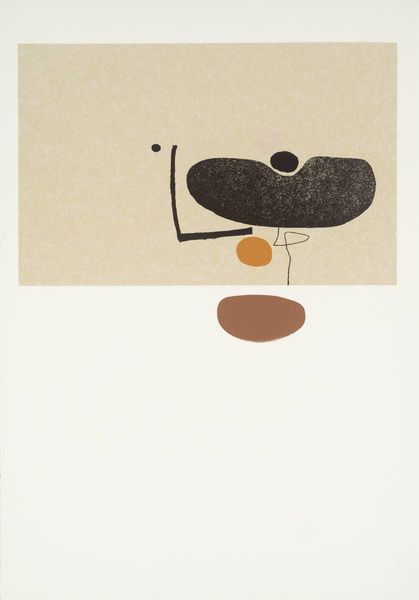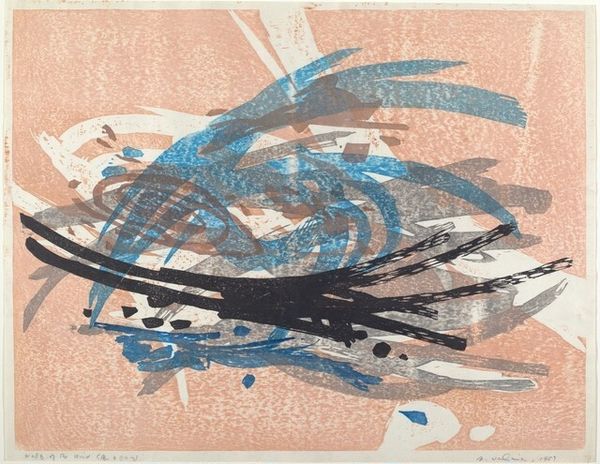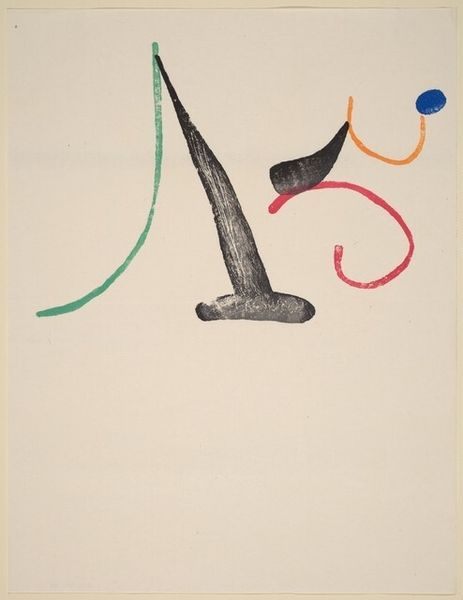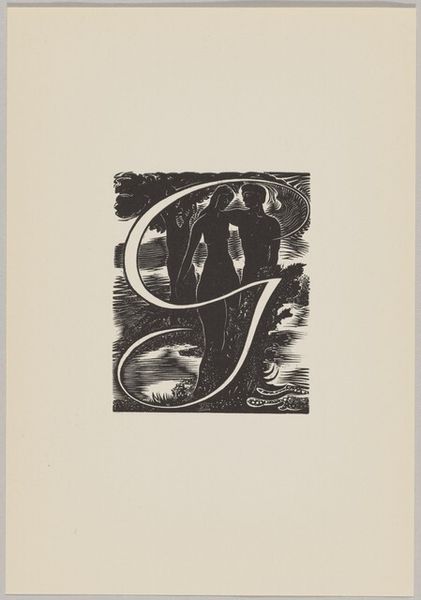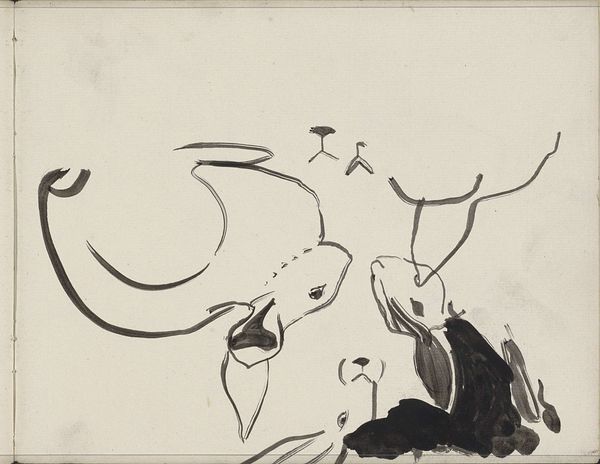
graphic-art, print, paper, ink
#
graphic-art
#
shape in negative space
#
ink paper printed
# print
#
paper
#
abstract
#
ink
#
geometric
#
abstraction
Copyright: National Gallery of Art: CC0 1.0
Curator: This is "Snow," a 1973 print by Maki Haku. It employs ink on paper to explore abstraction. What strikes you first about it? Editor: Definitely the texture of the paper itself. You can almost feel the surface, looks thick, almost hand-made, setting off that bold black form. And the way the shapes interact—crisp lines, deliberate edges—everything speaks to careful construction. Curator: Absolutely. Maki Haku was really important in the Sosaku-hanga movement which emphasized the artist's complete control over the printmaking process, from carving to printing. "Snow" is indicative of that ethos, pushing the boundaries between traditional printmaking and modern abstraction. The block printing technique itself is crucial to understanding his artistry. Editor: Yes, it begs the question about the relationship between the artist's hand and the machine. Sosaku-hanga sought a return to craft values, right? To push against industrial production. You sense it, here, with that almost brutalist chunkiness offset against what I’d almost describe as elegance within the larger composition. Curator: He gained international acclaim bridging the gap between traditional Japanese aesthetics and Western modernism. Think about the post-war cultural landscape of Japan—the tension between preserving heritage and embracing progress. Editor: Exactly. Look how these rough, almost industrial forms become linked with these really pure planes and textures—it reads as very precise manual work that produces that slightly-off kilter final design; is the mark of labour visible in it. Curator: I see it. Thinking about "Snow" within that historical context—the work becomes this visual metaphor. The large dark form and that single drop seem suspended between tradition, represented in mark making, and future promise signified by the modernist lean. Editor: And that little droplet of purple injects an amazing energy to the composition! Curator: Agreed. This exploration of form, texture, and tradition highlights Maki's significant place in 20th-century art history. Editor: And it reminds us of the physical process behind image-making.
Comments
No comments
Be the first to comment and join the conversation on the ultimate creative platform.

